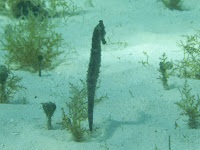On Thursday November 22 our class took a field trip to the Vancouver Aquarium. While we were there we conducted an experiment with snails to try and determine what they eat, we got to touch and learn about different sea creatures and also look around at all the species of animals there were at the aquarium. We went near the end of the week after we had been learning about different animals from different phylums that live in the ocean. We had learned about sponges from the phylum Porifera and a variety of jellyfish from the phylum Cnidaria. On our trip to the aquarium we were fortunate to see both of these magnificent animals. We went on this trip to try and acquire new knowledge about these amazing creatures and to also provide a kinesthetic environment for learning. On our behind the scenes look at the tanks of sea anemones, sea stars and hermit crabs we got to see how the animals would behave in their natural habitat which I know helped me make connections to what we are learning in class. Having the leaders explain to us about the species in each tank also taught us more in addition to the knowledge we already had from class. My favourite part of thee whole trip was getting to touch the sea anemones and the sea cucumbers and see how they would react if another animal would touch them. The sea anemones that we got to touch didn't have enough venom in them to sting us badly but when we did touch them they felt sticky. I also liked holding the sea urchins and seeing the difference in their structure between when you held them out of water and then inside the water. Another creature I really enjoyed looking at was the sea stars because when I held one in my hand it slowly molded its body to the shape of my hand the way it would if it was sitting on the side of a rock, which I found really neat.
 |
The Clown Fish and the Sea Anemone have a symbiotic relationship, which means they both benefit. The Clown Fish scares off any other fish that might try and eat the anemone and it also drops bits of food that the anemone picks up, while the stinging tentacles of the anemone provide protection for the Clown Fish.
 |
| Otters spend so much time cleaning their coats because that is what allows them to survive in the chilly waters that they live in. Their thick layer of fur traps the air and insulates the otter. |
|
 |
Before the year 1900 sea otters could be found in the North Pacific Ocean and more specifically near Alaska and California. However, the sea otters were being hunted for their fur before the 1900's so there weren't alot of otters in the world. In the early 1900's people were banned from hunting otters and around the1960's and 1970's sea otters started to be reintroduced to Alaska and California.
 |
| The colour of the sea anemones beside the sea otters tank is red, green and purple. |
|
 |
| The purpose for the white suction cups on the arms of the octopus is that they contain nerves and they can also taste with the suction cups. Octopus's are very intelligent and they also have sharp beaks inside their mouths that they use to tear into the flesh of their prey. The bite of an octopus is also venomous. |
 |
Stellar Sea Lions eat mostly squid, fish or invertebrate. Some of the fish they eat are herring, salmon, pollock and cod. Each day sea lions have to eat at least 6% of their body weight.
|
 |
The Caimans came from Central and South America.
 |
The crocodiles at the aquarium were a dark green and brown colour. This colouring helped them camouflage in their environment and hide from predators.
|
|

















.jpg)



Purpose (connections to class)- 4/4
ReplyDeleteQuality of Content (info from class)- 4/4
Personal Reflection- 4/4
Conventions (writing)- 4/4
Requirements (questions)- 10/10
26/26 Great work!!